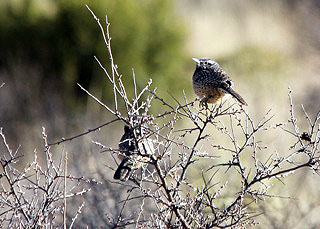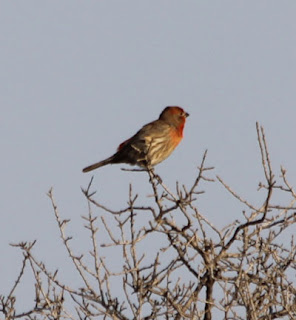Ultralight-led Whooping Crane Found Dead in Alabama
$6,000 Reward Offered for Information on the Killing of Whooping Crane 12-04
The U.S. Fish and Wildlife Service is investigating the death of a whooping crane reported by an Alabama conservation officer at Weiss Lake, in Cherokee County Ala., on Jan. 28, 2011. The lake is located midway between Atlanta, Birmingham, and Chattanooga. Investigators believe the crane was shot.
The male whooping crane, designated 12-04, was equipped with a transmitter and leg bands to help track his movements. Trackers located it in January with other whooping cranes in a Cherokee County field not far from the lake where it was killed.
Scientists at the U.S. Fish and Wildlife Service Forensics Laboratory in Ashland, Ore., are conducting a necropsy on the dead crane. It is the only lab in the world dedicated to crimes against wildlife.
Raised in Wisconsin at Necedah National Wildlife Refuge, whooping crane 12-04 learned how to migrate behind ultralight aircraft flown by Operation Migration.
Operation Migration is a partner with the Whooping Crane Eastern
Partnership, and for 10 years has lead between seven and 20 cranes per year on their first migration from Wisconsin to Florida to increase whooping crane numbers to recover this magnificent endangered species.
The bird made its first migration to the Chassahowitzka National
Wildlife Refuge in Florida during the fall of 2004. It annually wintered in Florida until 2009. Since then it has spent winters on the marshes in and around Weiss Lake, Ala.
“We are extremely disappointed by the killing of this whooping crane,” said Jim Gale, Special Agent in Charge of Law Enforcement in the Service’s Southeast Region. “We recently lost three whooping cranes to gunfire in south Georgia, now this one in Alabama. This senseless killing has just got to stop.”
Gale has asked for the support of the public, especially the fishing, hunting, and boating community who may have seen or heard about the killing on Weiss Lake to help prosecute whoever shot this crane.
A $6,000 reward is being offered for information that leads to a
conviction. To provide information, call Special Agent John Rawls at 334-285-9600, or e-mail him at john_rawls@fws.gov.
Several organizations are contributing to the reward including Operation Migration, which led this bird south with Ultralight aircraft on its first migration in 2004, The Turner Foundation, the International Crane Foundation, the Alabama Wildlife Federation, and the U.S. Fish and
Wildlife Service.
The Whooping Crane Eastern Partnership uses two techniques to establish the Eastern Migratory Population. One method trains cranes to follow costumed pilots flying ultralight aircraft from Wisconsin to Florida.
The other releases young birds directly into wild populations of
whooping cranes and sandhill cranes – called Direct Autumn Release.
Last spring, whooping crane 12-04 had paired with 27-05, the oldest Direct Autumn Release bird. The new couple successfully mated and had a late season nest with two eggs in Juneau County, Wis., south of Necedah National Wildlife Refuge. One egg hatched and the pair raised the chick for several weeks until it disappeared, presumably taken by a predator -- possibly a bobcat or coyote.
Captive whooping cranes produce Direct Autumn Release cranes at the International Crane Foundation in Baraboo, Wis. These eggs are hatched there, then raised in isolation by costumed caretakers for the first six weeks. Specialists then move them to an isolation facility in natural habitat on Necedah National Wildlife Refuge where costumed caretakers raise them. They are later released into the company of older whooping cranes around Necedah National Wildlife Refuge for the fall migration in November. They then follow those experienced whooping cranes and sandhill cranes, learning the migration route to the wintering habitat.
It has taken five years for the birds in the Direct Autumn Release program to learn to nest -- a milestone for the program that began in 2005.
The cranes are part of the Whooping Crane Eastern Partnership effort to reintroduce whooping cranes into the eastern United States. There are about 570 whooping cranes left in the world, 400 in the wild. There are about 100 cranes in the Eastern Migratory Population.
In addition to the Endangered Species Act, whooping cranes are protected by state laws and the federal Migratory Bird Treaty Act.
For more information about the reintroduction effort, visit
http://www.bringbackthecranes.org.
























